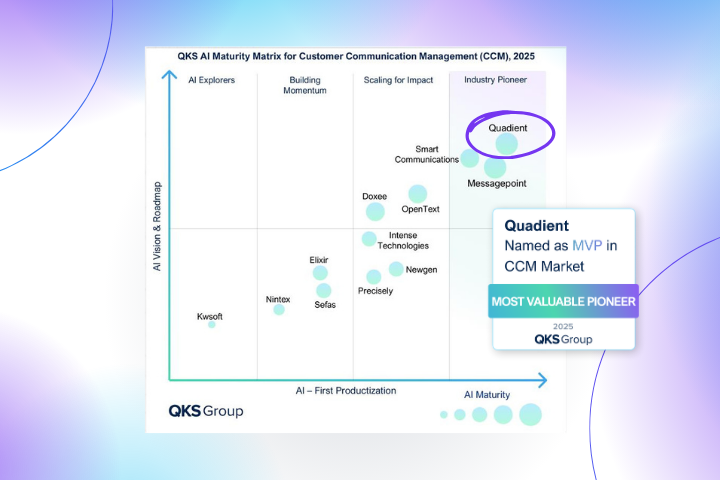
We’ve waxed lyrical about the importance of implementing new practices and technologies to better meet customers’ needs in accounts receivable. After all, they’re the people who put money into your business.
But what about the people that manage your AR process to ensure it operates smoothly and allows you to collect customers’ cash? Gallup, a research organization that works with businesses to identify employee issues found that the most engaged teams create higher profitability, sales and productivity than their less-engaged counterparts.
The most engaged teams create higher profitability, sales and productivity than their less-engaged counterparts.
Source: Gallup
Our recent blog post explored the signs of burnout. Now we’re going to share five keys that help you address them and boost employee engagement in your finance team.
➜ Check Out the "Finance Leader’s 5 Step Guide to Boosting Employee Engagement”
Address The Basics
Gallup determined 12 employee engagement questions that predict high performance. We won't go into all of them (you can find the full list here), but let’s look at three questions that apply well to the AR team.
The most basic question that every employee should be able to answer is, “Do I know what is expected of me at work?” While adaptability is important, it’s equally important that managers map out the responsibilities expected.
AR staff face a myriad of tasks and managers must help them prioritize their time; whether that’s spent maintaining accurate financial data, establishing clear credit policies or honing the cash application process. Ensuring work is delegated evenly and staff don't duplicate efforts is the first step toward answering this question.
Next is, “Do I have the tools needed to successfully manage my job?” In AR, this isn’t a guarantee. There’s often a lack of investment in technologies that make work easier. Collaboration software like Asana and Slack can get teams interacting frequently, exchanging information and identifying symbiotic areas. This breaks down silos and improves task efficiency.
The third question is: “Can I do what I do best every day?” This is often overlooked in the AR department. Staff are typically bogged down in routine tasks and do not have the opportunity to nurture customer relationships or provide more strategic value to the organization. As a result of this, disengagement grows and the likelihood of staff turnover increases. Implementing an employee engagement software greatly helps in keeping your employees engages and productive.
Featured Resource: Finance Leader’s 5 Step Guide to Boosting Employee Engagement

Recognize Performance
Gallup found that only one in three workers in the U.S. and Germany strongly agree that they received recognition or praise in the past seven days. Those who disagree are twice as likely to say they’ll quit in the next year. Praise is that powerful.
Employee recognition offers a range of benefits from encouraging collaboration, clarifying organizational goals, reinforcing employee purpose and improving quality. At a time when your business needs all hands on deck to manage today’s economic challenges, these improvements are key.
In your AR team, effective recognition practices can include having your CFO call out the top performers on company calls. Or offering individual and team incentives to motivate staff to work hard independently and pull together to achieve results.
Create a Feedback Culture
This idea of recognition is part of the broader priority of creating a feedback culture. That means, do employees feel their opinions are valued and listened to? And do they feel that they receive regular input on their progress?
Research has found that the ability to provide and receive feedback at work has a significant impact on engagement and performance, with organizations investing in regular employee feedback experiencing almost 15% lower turnover rates.
Similarly, teams that feel better connected are 5X more likely to report increased productivity.
These stats are huge. When you think about the simple changes you could make to create a feedback culture; you realize just how much the reward outweighs the effort. Less turnover and increased productivity. Two significant outcomes that have a transformative impact on performance and company success.
Teams that feel better connected are 5X more likely to report increased productivity.
Source: Forbes
Become Agile
We know “becoming agile” sounds buzzwordy. But the impact agile working principles have is huge. A study found that after adopting agile principles, companies have experienced an average 60% growth in both revenue and profit. With stats like, it’s no wonder that more than 70% of U.S. businesses are building an agile culture.
So how does agile working, work?
The first element is sprint planning. In a sprint meeting, projects are broken down into blocks of time. Backlogs are reviewed and priorities are determined for what needs to be accomplished during the upcoming sprint. The meetings detail exactly what is expected of each employee in the upcoming sprint so that duties are clearly defined. In AR terms, that may mean breaking down the business's portfolio, instructing staff to spend one day a week focusing on specific customers and creating a list of the top five accounts that they need to progress payment for.
70% of U.S. businesses are building an agile working culture
Source: McKinsey & Company
After the sprint planning are daily scrums. These are typically 10–15-minute stand-up meetings that allow team members to report on progress, list daily priorities, and detail anything that may be hindering them as they work through their goals.
Rounding out this process is sprint reviews. These occur at the end of the sprint and are used to report on results and discuss changes that should be implemented in the next sprint. Achieving team consensus on suggested approaches is an effective way to empower employees. Silos are eliminated and the collective brainpower of the team is far more equipped to solve a challenge than one person struggling silently.
Embrace Automation
Even with a strong focus on employee engagement, accounts receivable management can impact job satisfaction and morale. Tasks are difficult, while the role itself is stressful given the bearing it has on company performance and success. That means that AR teams need the right tools at their disposal to eliminate the grunt work, discover greater job satisfaction and create more value for their organization.
That’s where automation comes in.
With AR automation, staff can wave goodbye to the manual tasks that leave them feeling bogged down and dissatisfied and focus on value-added activities. “Value-added” doesn’t just mean adding value to the organization. It also means adding value to that person’s experience at work.
Quadient AR customer, CorneaGen, embraced AR automation to automate collections, simplify financial reporting and improve their customer experience. Not only did this result in a whopping 70% reduction in write-offs and customers paying 50% faster. It also boosted employee morale, enabling them to exceed KPIs and free up time to focus on tasks that drive greater job satisfaction.








